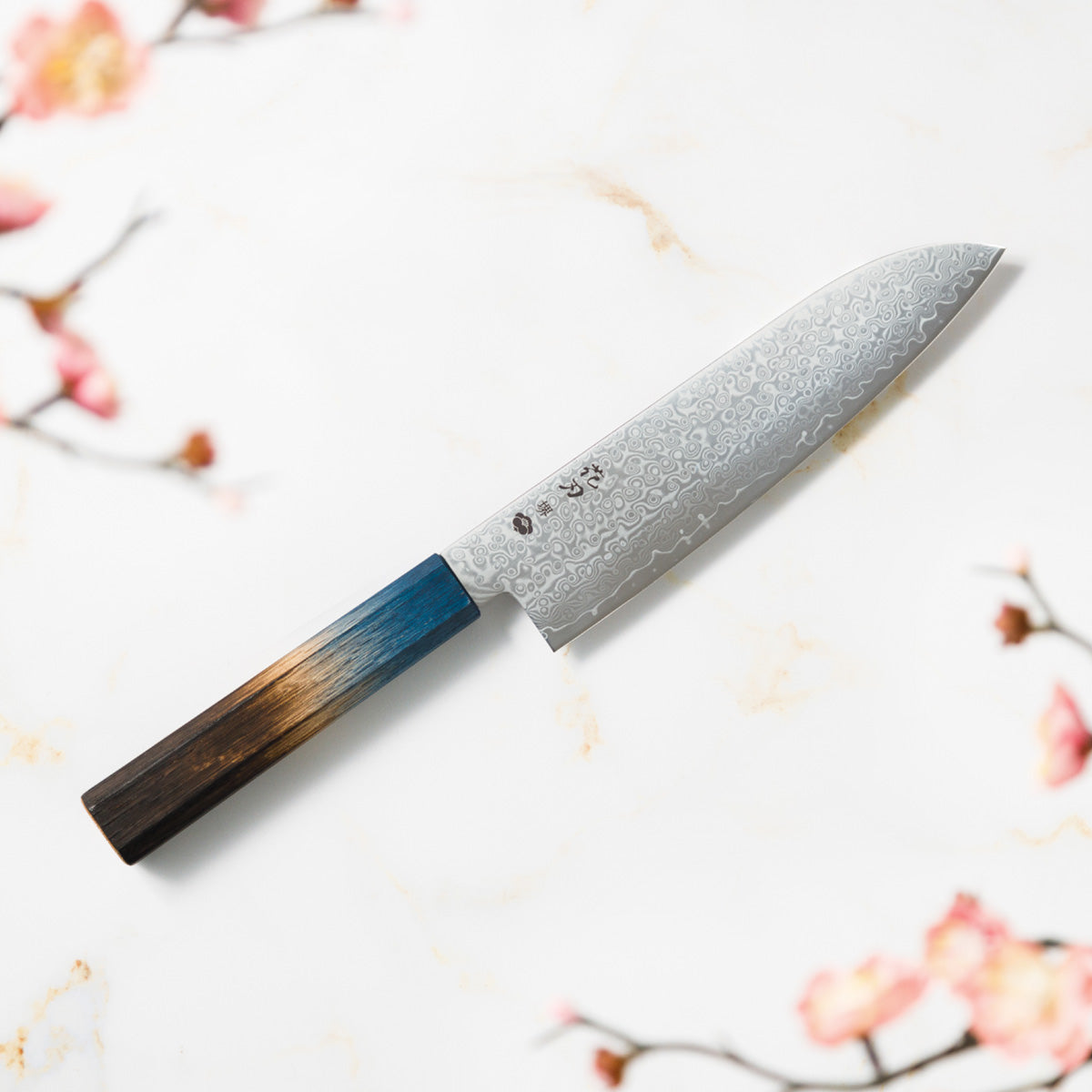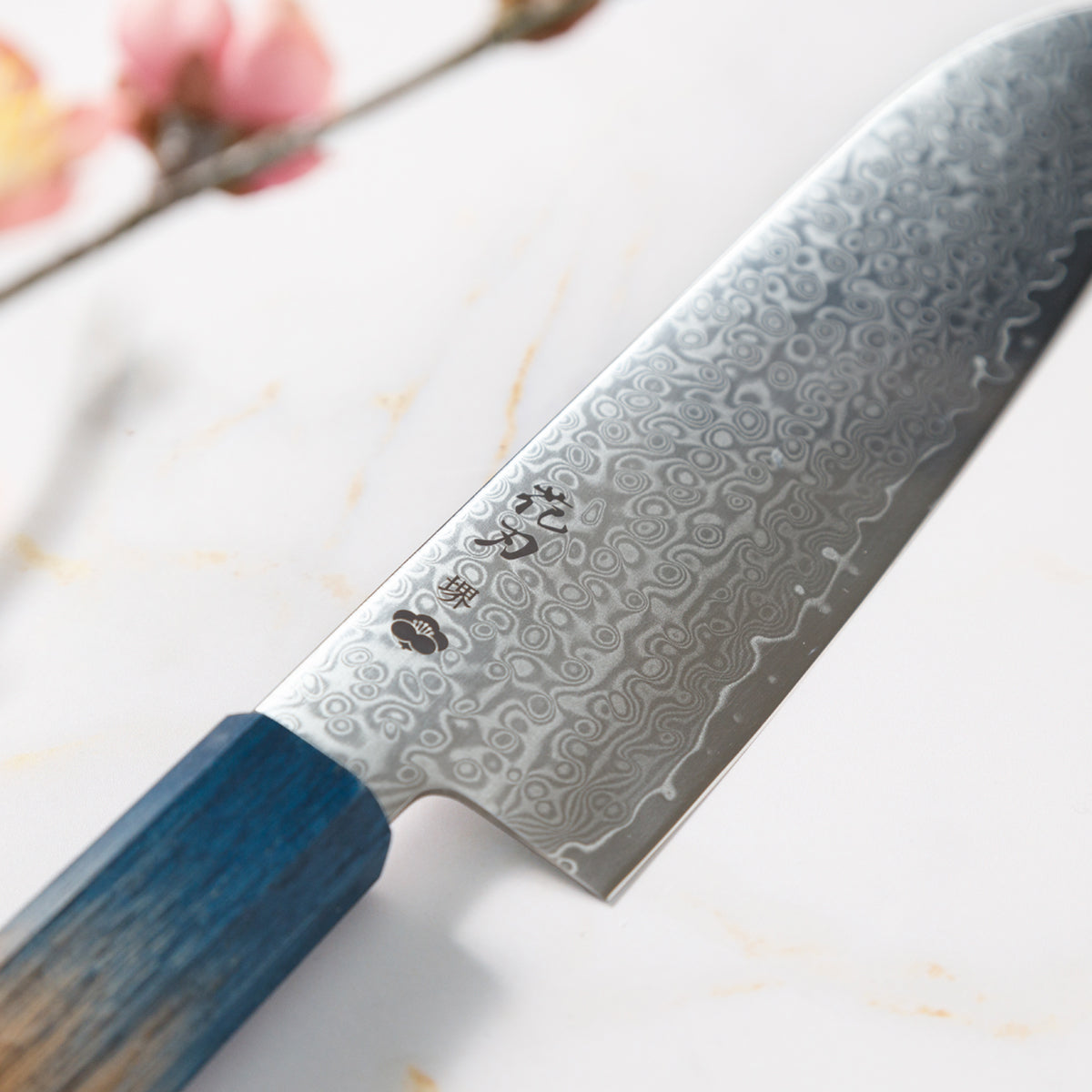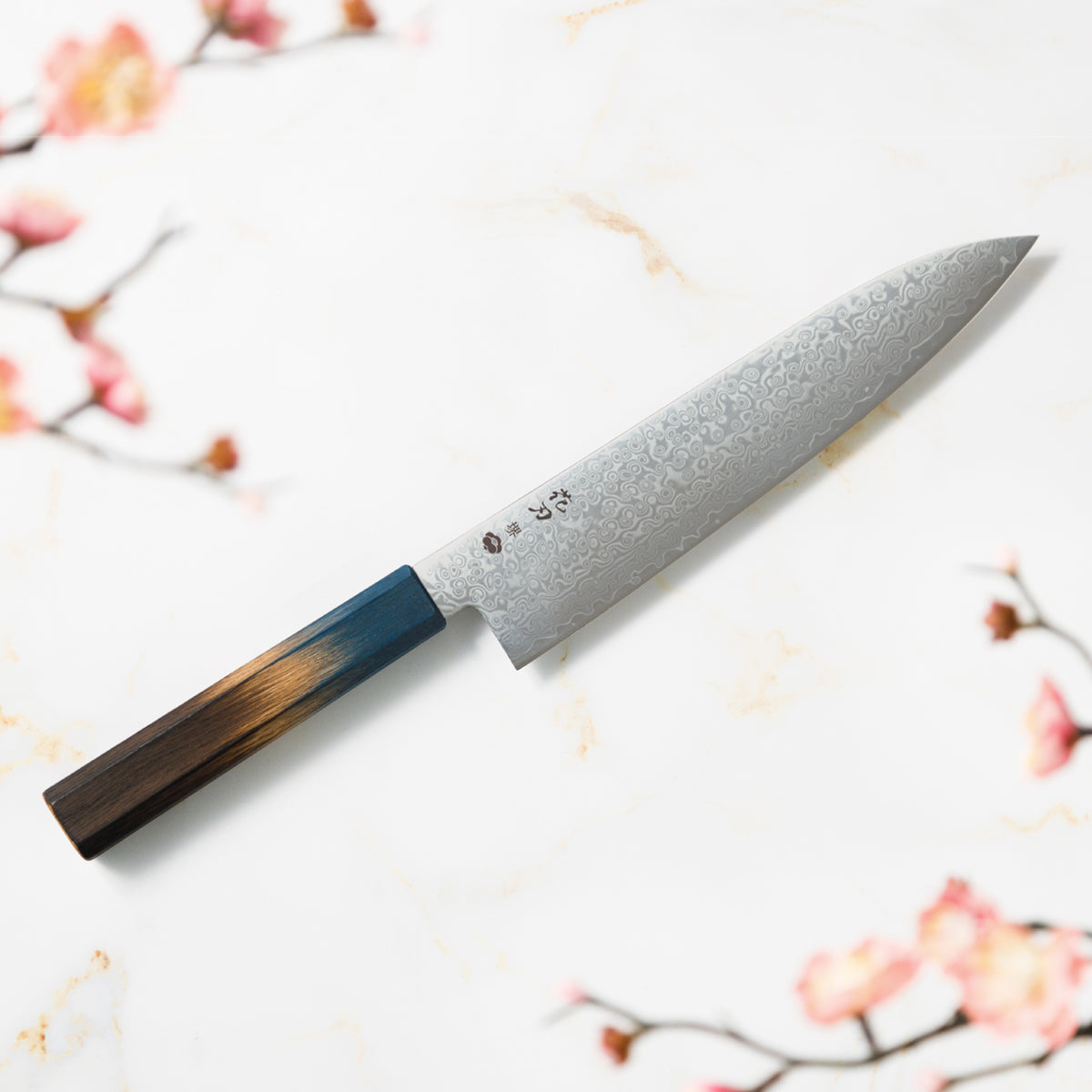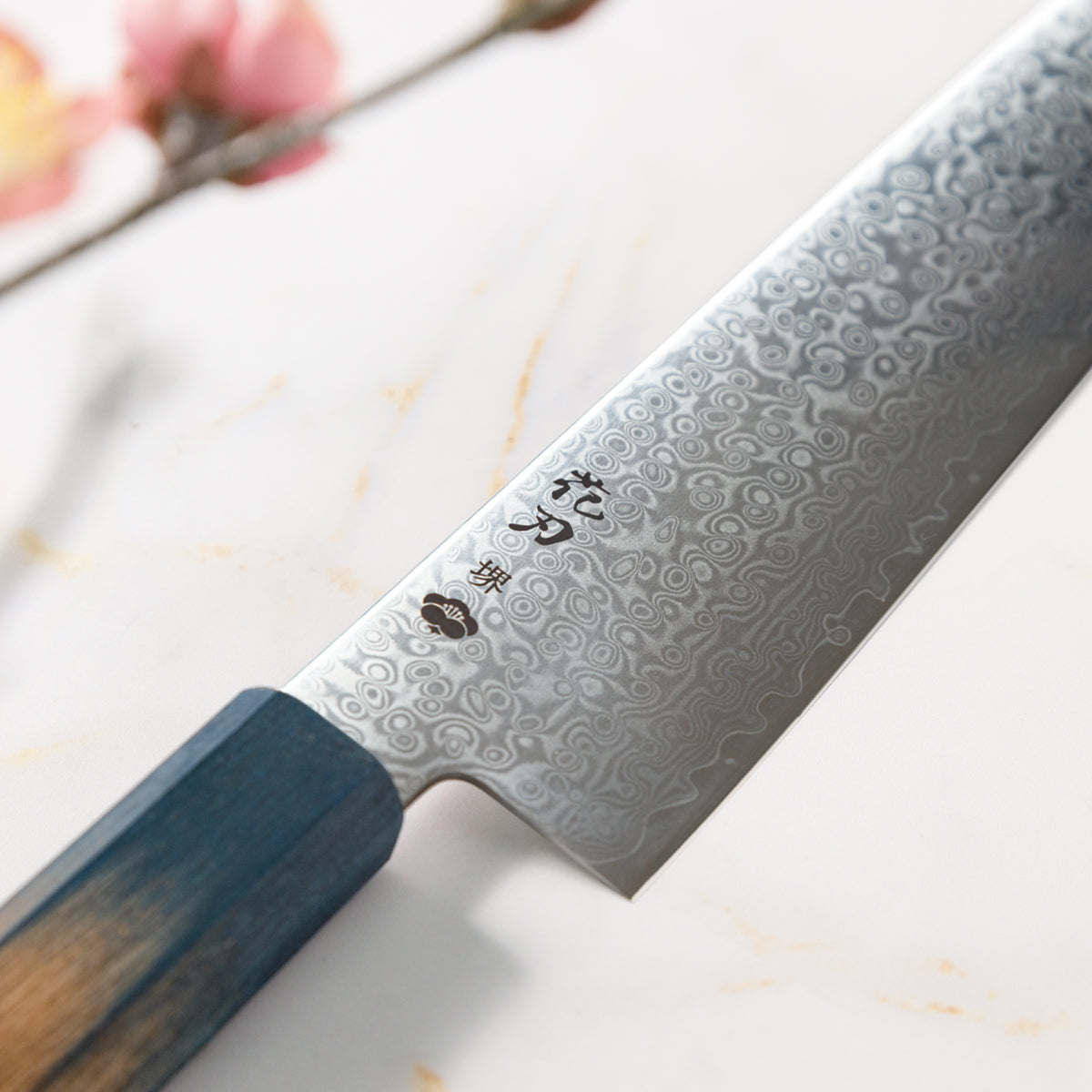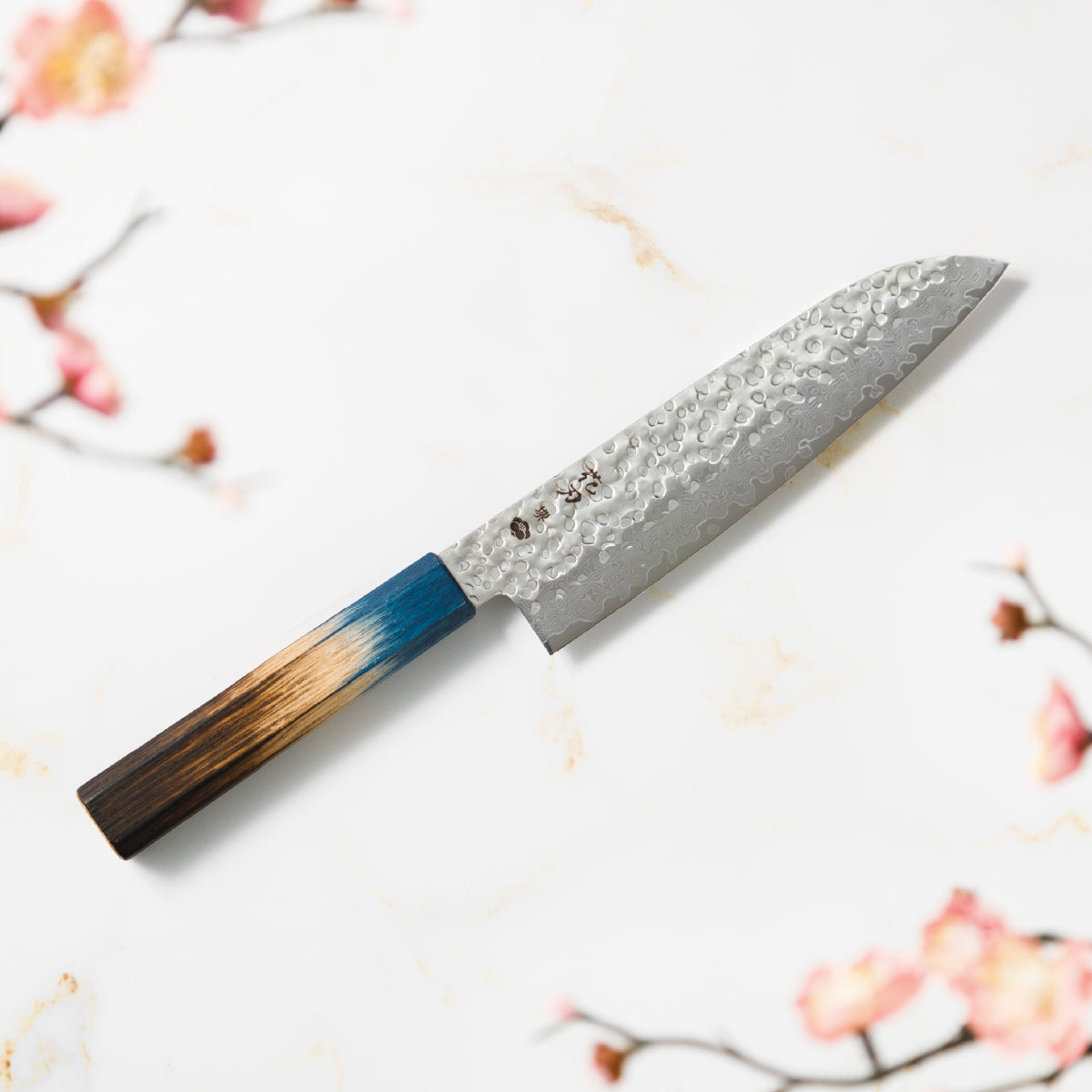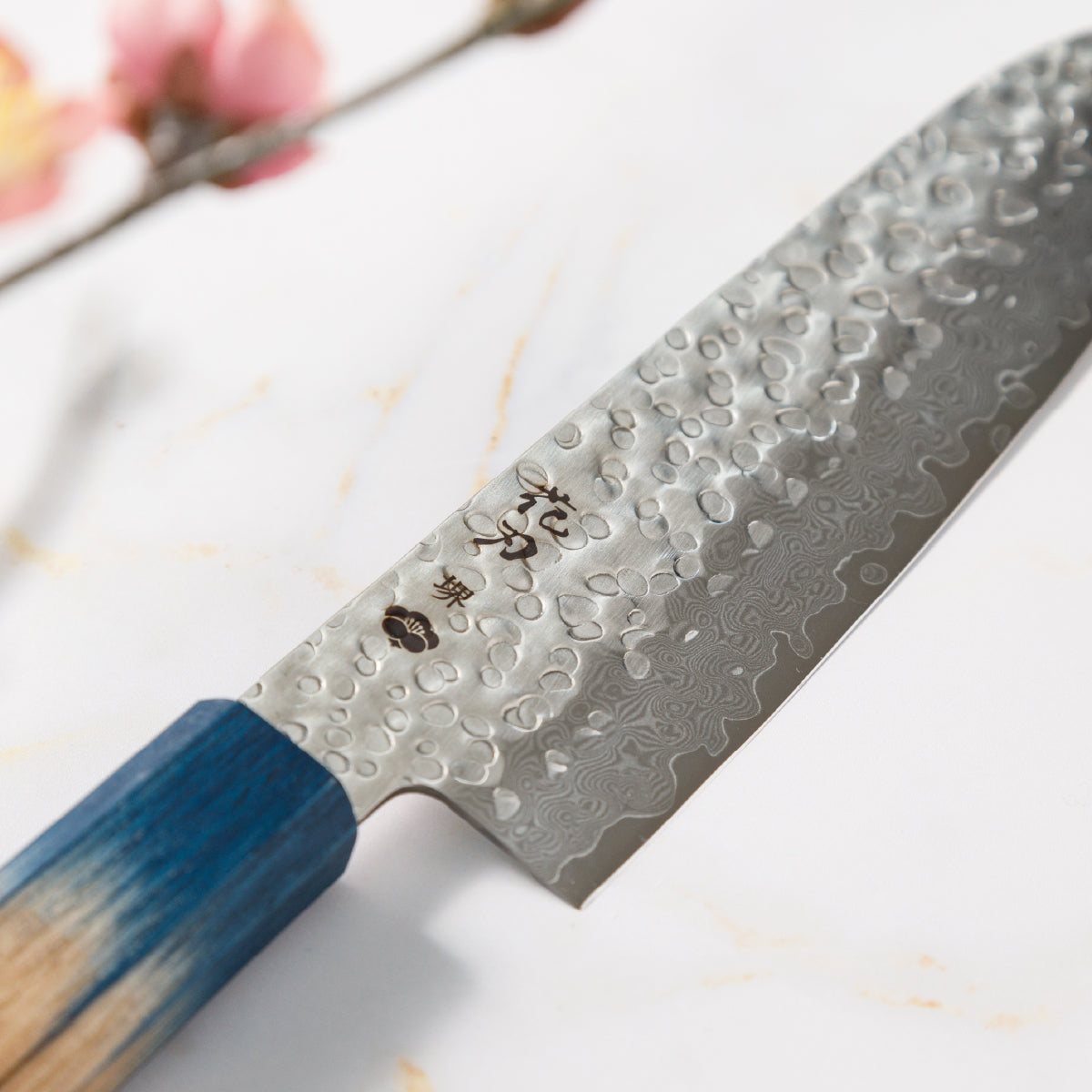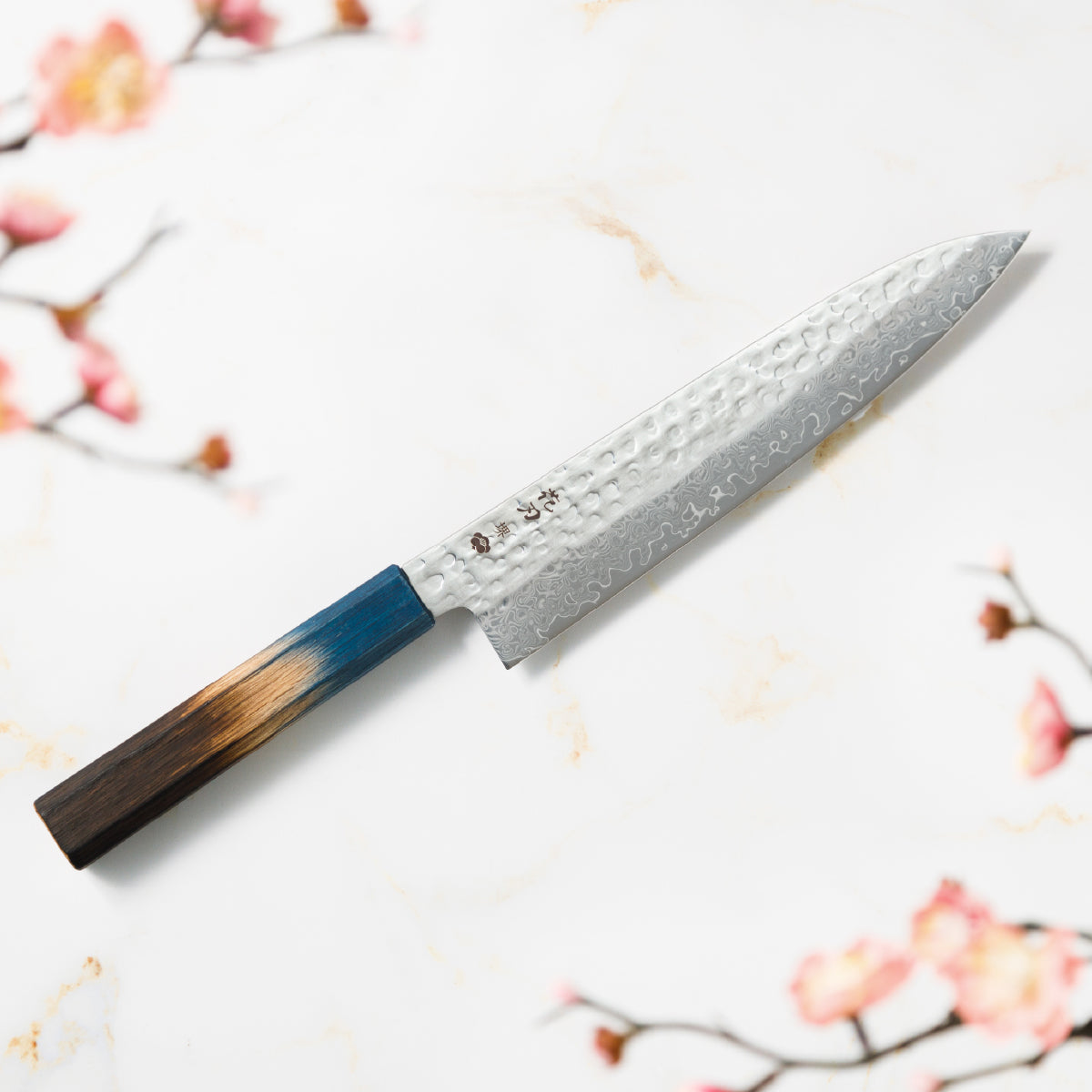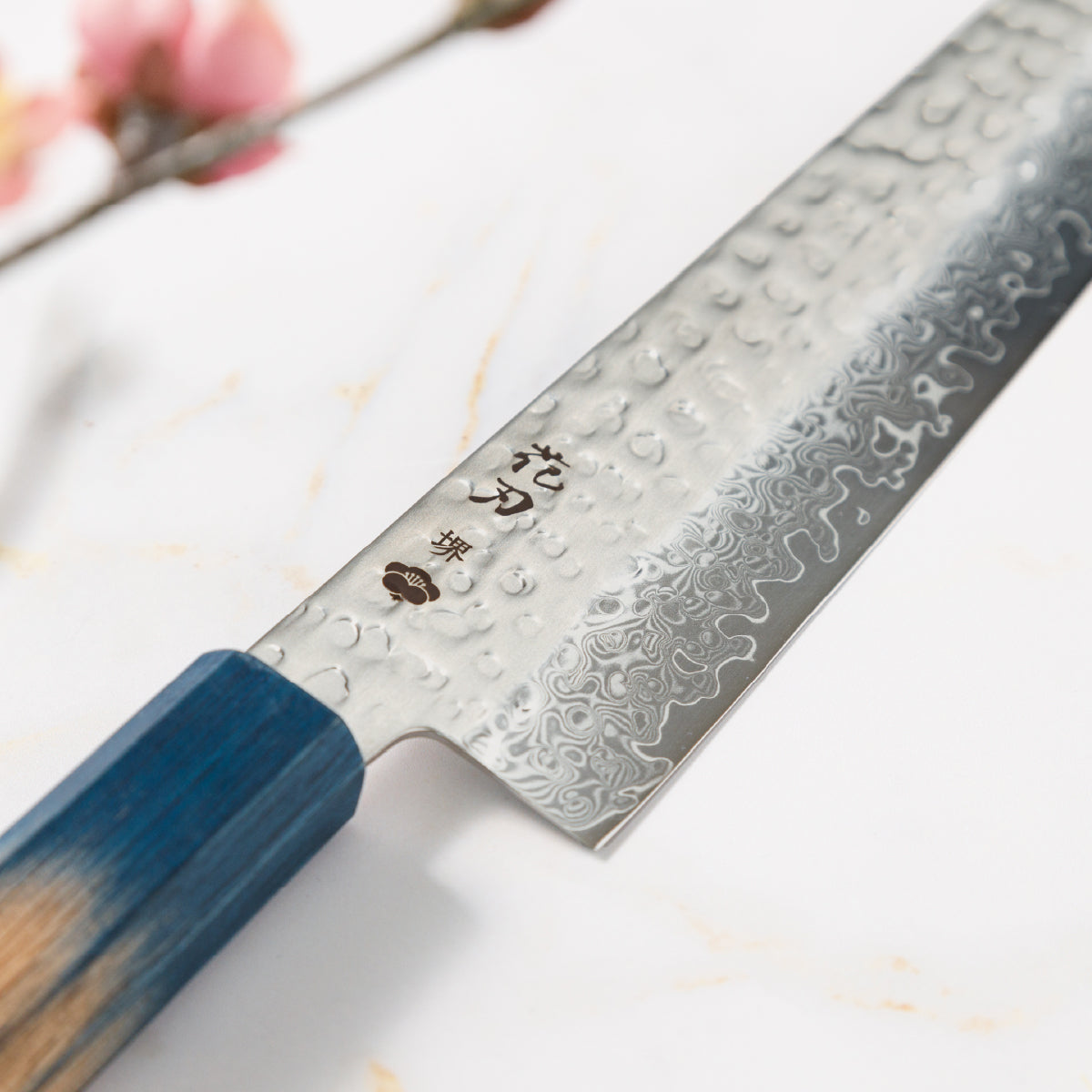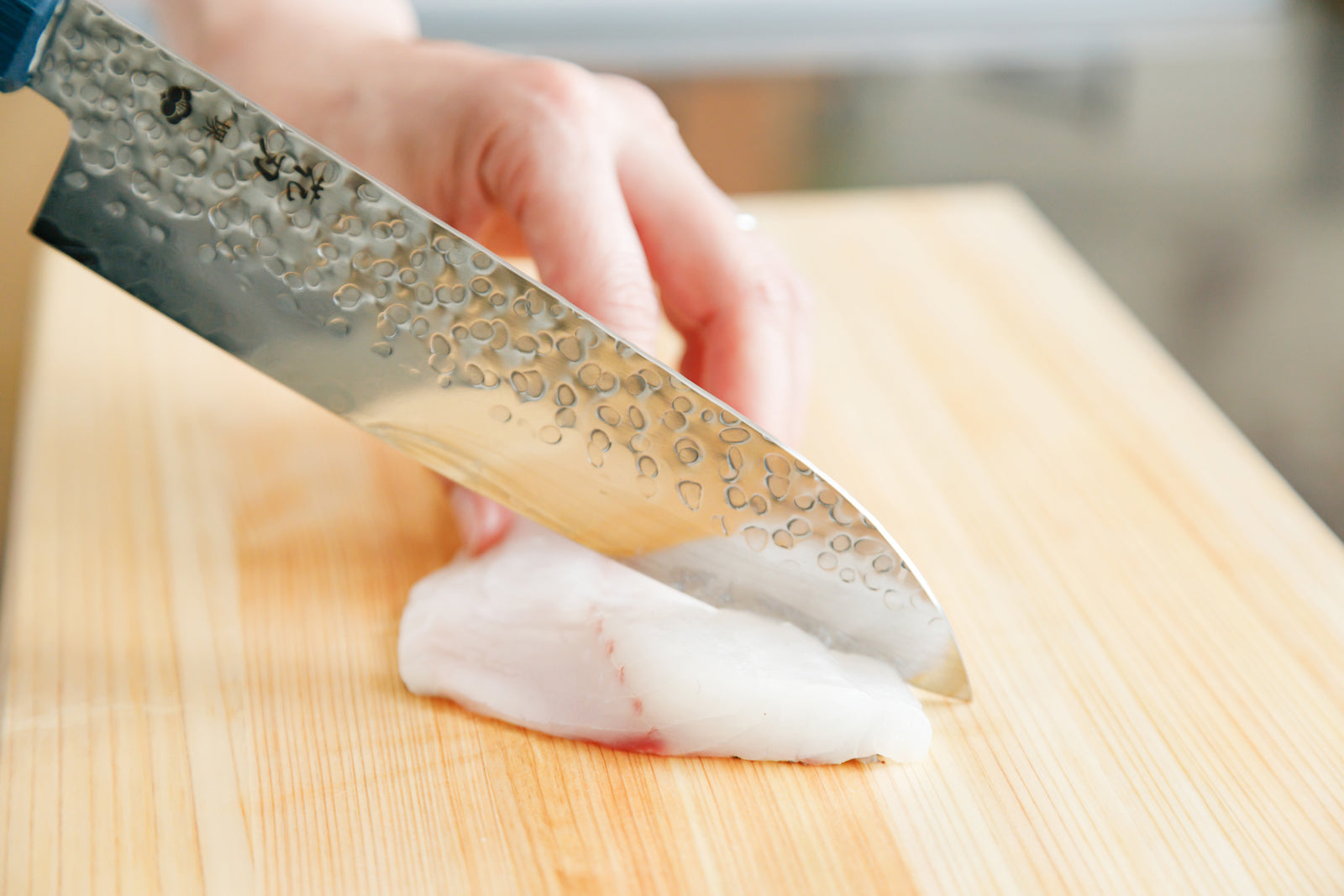
Japanese Knife Guide: Single and Double Bevel Explained
Single vs. Double Bevel
If you’ve been researching Japanese knives, you’ve probably come across the term “knife bevel.” It’s often used interchangeably with “grinding angle” or “edge angle,” which can make things a bit confusing.
In this article, we’ll break down what a bevel is, the difference between single and double bevel knives, and how that difference affects your experience in the kitchen.
What Is a Knife Bevel?
The bevel is the angled surface that leads to the knife’s cutting edge. Imagine labeling the sides of a blade A and B. On a single bevel knife, only one side (typically B) is ground to form the edge. On a double bevel knife, both sides (A and B) are angled equally to form a symmetrical point.
This simple structural difference has a big impact on how each knife performs—and what it’s best used for.
Single Bevel Knives
Single bevel knives are a hallmark of traditional Japanese cuisine. They’re designed for precise, specialized tasks—especially where visual presentation and delicate handling matter. For example, they excel at slicing sashimi into uniform, paper-thin pieces or shaving daikon into unbroken sheets.
That said, they come with a few considerations. Because the bevel is only on one side, single bevel knives are either left-handed or right-handed—so be sure to choose the correct orientation when purchasing.
They also require more skill to sharpen properly. The edge can be made incredibly fine, but maintaining it takes time and practice.
Double Bevel Knives
Double bevel knives are far more common and are the standard in most Western kitchens. They’re versatile, user-friendly, and can handle just about any kitchen task.
One of their key advantages is that they’re ambidextrous—suitable for both left- and right-handed users. They’re also easier to sharpen and more forgiving to learn with, making them ideal for beginners and everyday home cooks alike.
How Do They Cut Differently?
Single bevel knives tend to pull slightly toward the flat side of the blade when cutting. This makes straight cuts more challenging, especially if you're not used to the technique.
But the upside is their ability to make incredibly thin, clean cuts with minimal resistance—great for aesthetics—preserving the texture and flavor of delicate ingredients.
Double bevel knives, by contrast, have a symmetrical edge that makes it easier to cut straight down. This gives you more stability and consistency, especially for tasks like chopping vegetables or portioning meat.
While they may not offer the same surgical precision as a single bevel, they’re much more forgiving and adaptable.
Which One Should You Choose?
There’s no universal answer to which bevel type is “better.” It all depends on what you cook—and how you cook it.
If you're getting into sushi or traditional Japanese fish prep, a single bevel knife will give you unmatched control and finesse. A double bevel blade simply can’t match the clean, consistent cuts required for perfect sashimi.
But if you're looking for a reliable all-purpose knife for home cooking—one that’s easy to use, maintain, and master—a double bevel knife is the better fit. It’ll feel more familiar in hand, and a high-quality Japanese double bevel knife will serve you for a lifetime.
Conclusion
Whether you choose a single bevel or double bevel knife, investing in a well-crafted Japanese blade means getting exceptional sharpness, durability, and precision.
Even an affordable Japanese knife will perform better than its Western counterpart.
Explore our selection of expertly made single and double bevel knives—and find the perfect tool for your kitchen today!




